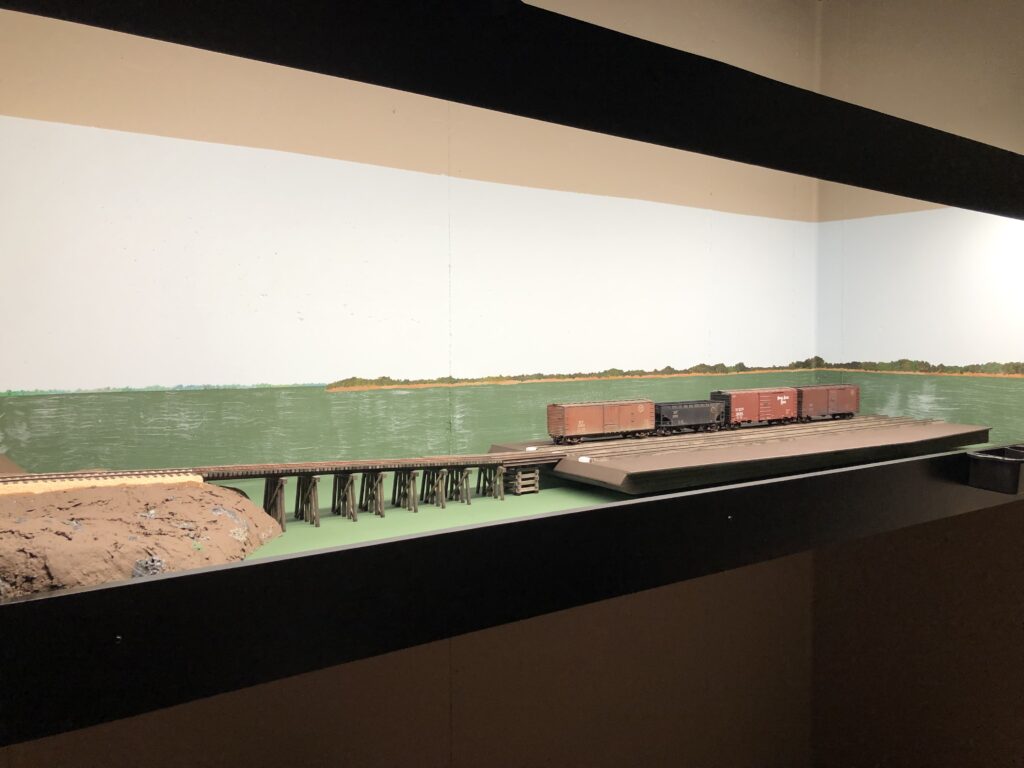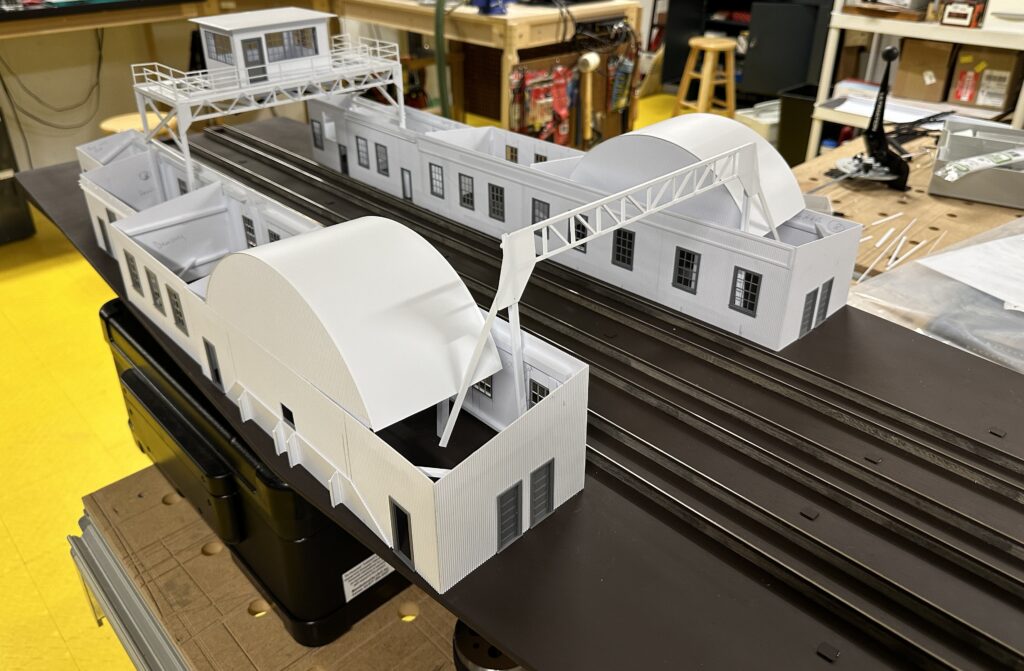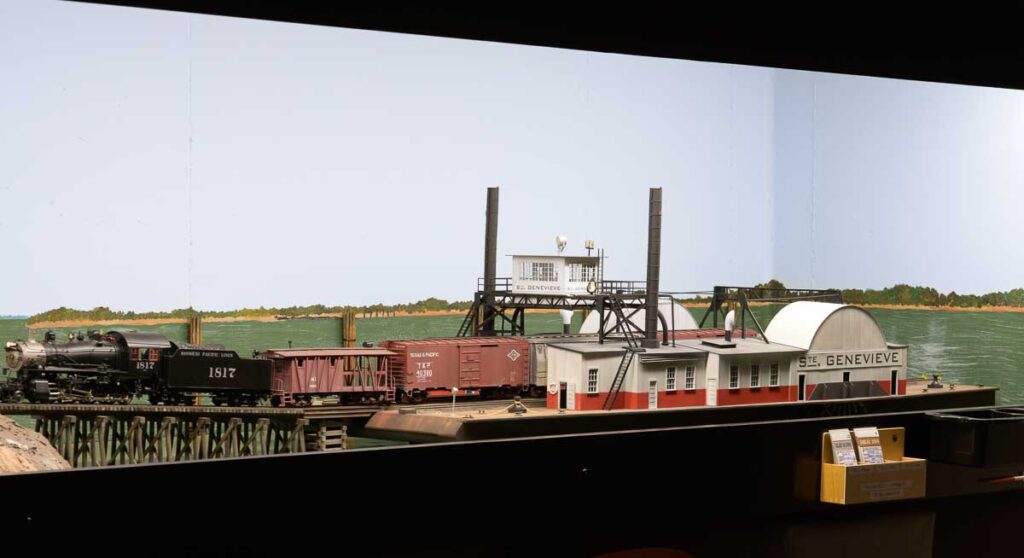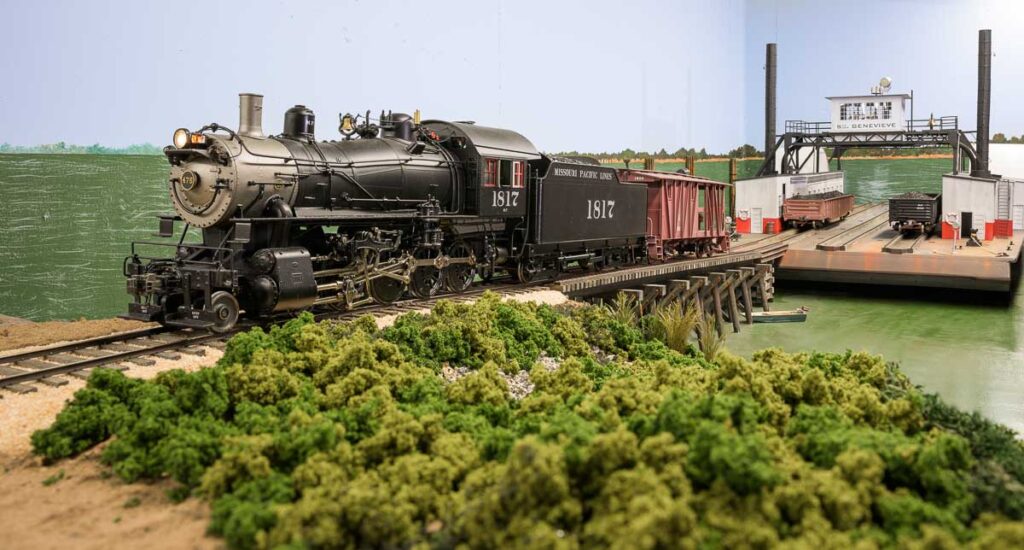Prototype…
The SS Ste. Genevieve was built in 1922 by the Charles Ward Engineering Works at Charleston, W.Va. The side wheeler’s six coal-fired boilers powered 28′ paddle wheels. The hull measured 286′ x 86′, capable of carrying 18 railcars on three parallel tracks and could even haul a 160 ton locomotive on its center track. The superstructure was covered in galvanized steel, later painted white over red.
Archival film from the 1950’s is available on YouTube showing the Ste. Genevieve in action on both sides of the river (Thomure, MO and Kellogg, IL). The Ste. Genevieve clip is one minute in length and begins at the 11 minute 32 second mark.

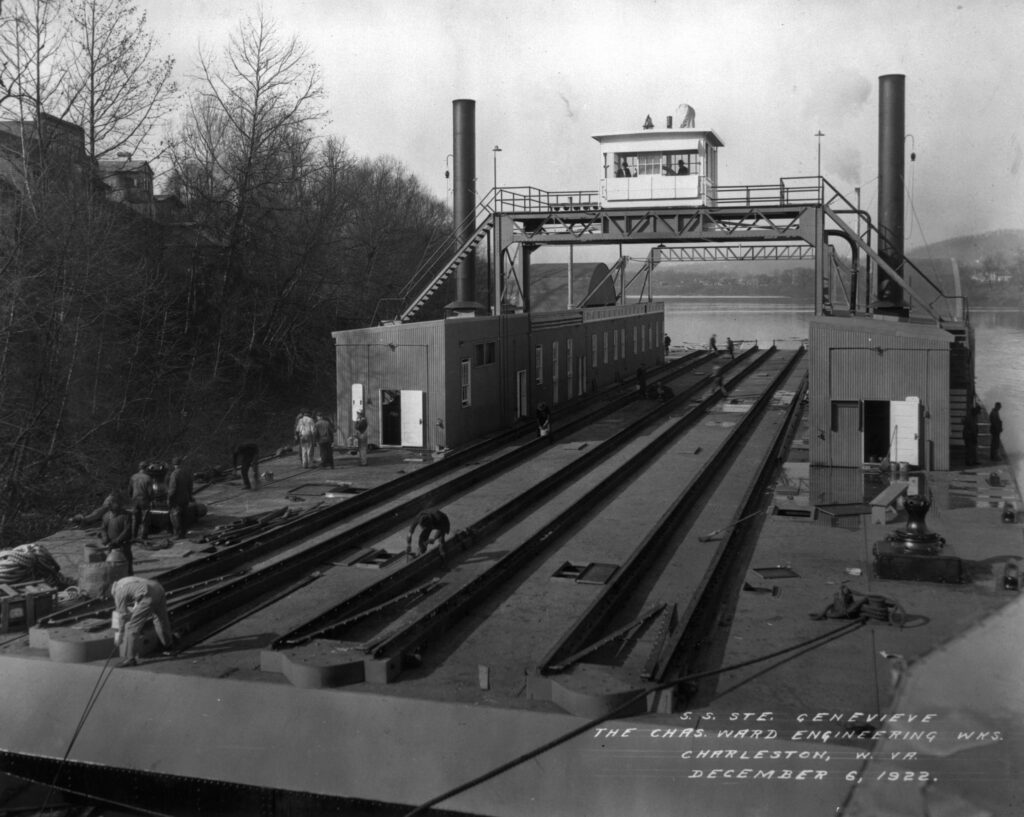
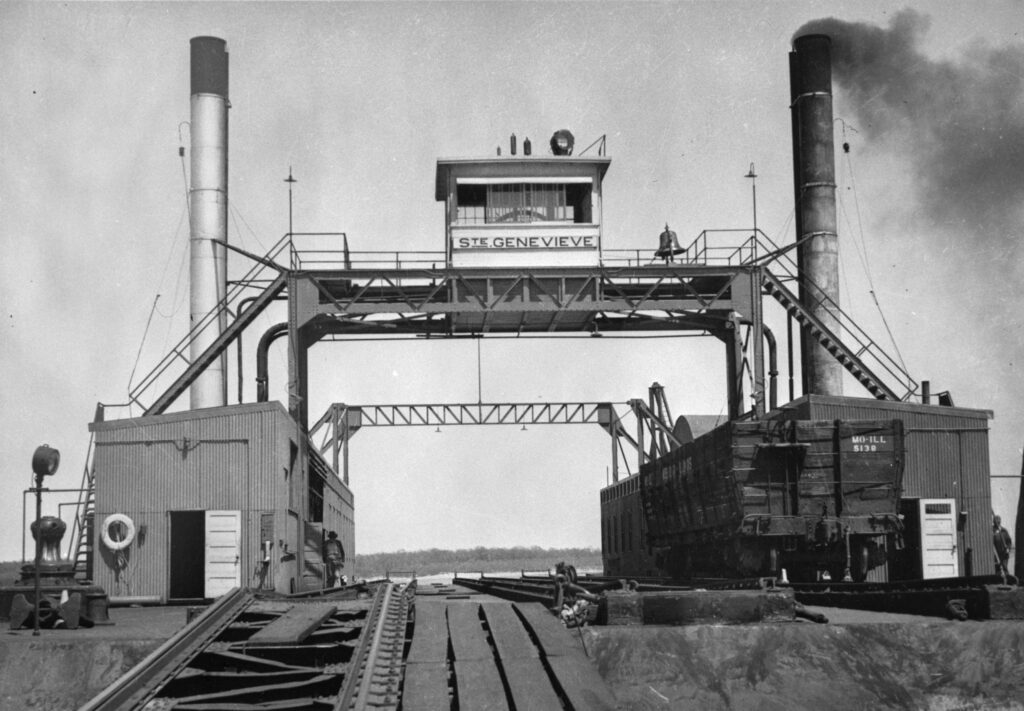
Modeling the ferry boat…
The Ste. Genevieve model must be scaled down to fit the space – the hull, built from ¾” Birch plywood, has been shortened to 209 scale feet and width is just 4′ shy of the prototype at 82′. Despite the reduction in size, the model should be a prominent landmark on the layout, measuring 52″ x 20″ and holding 12 railcars on its deck.
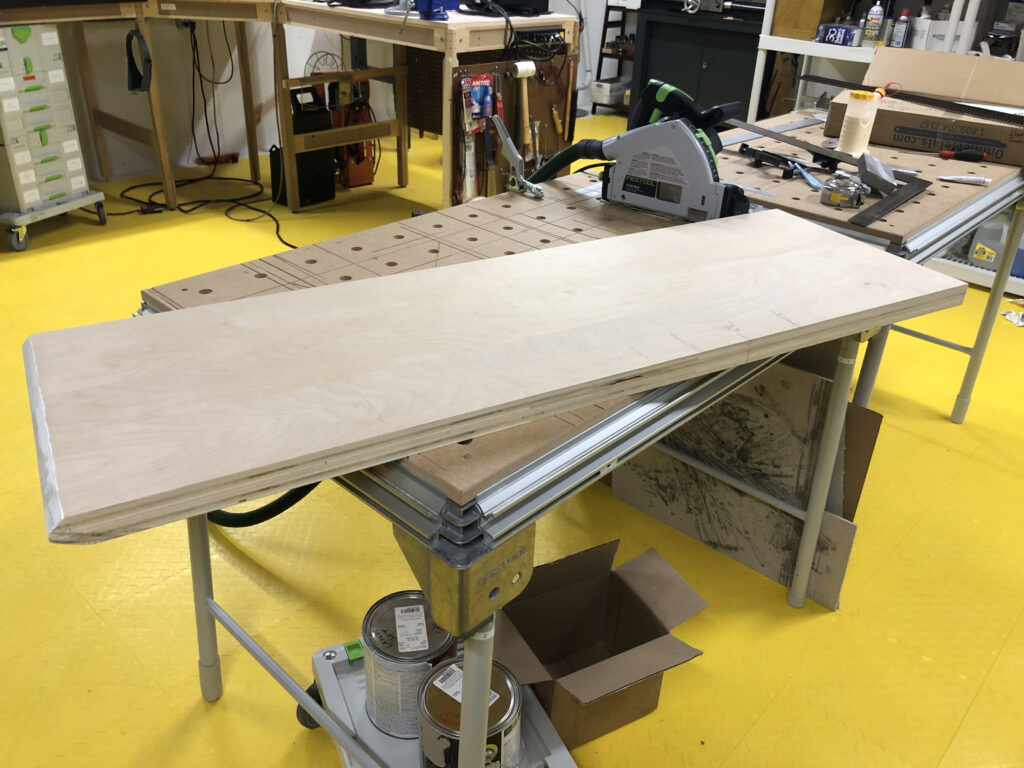
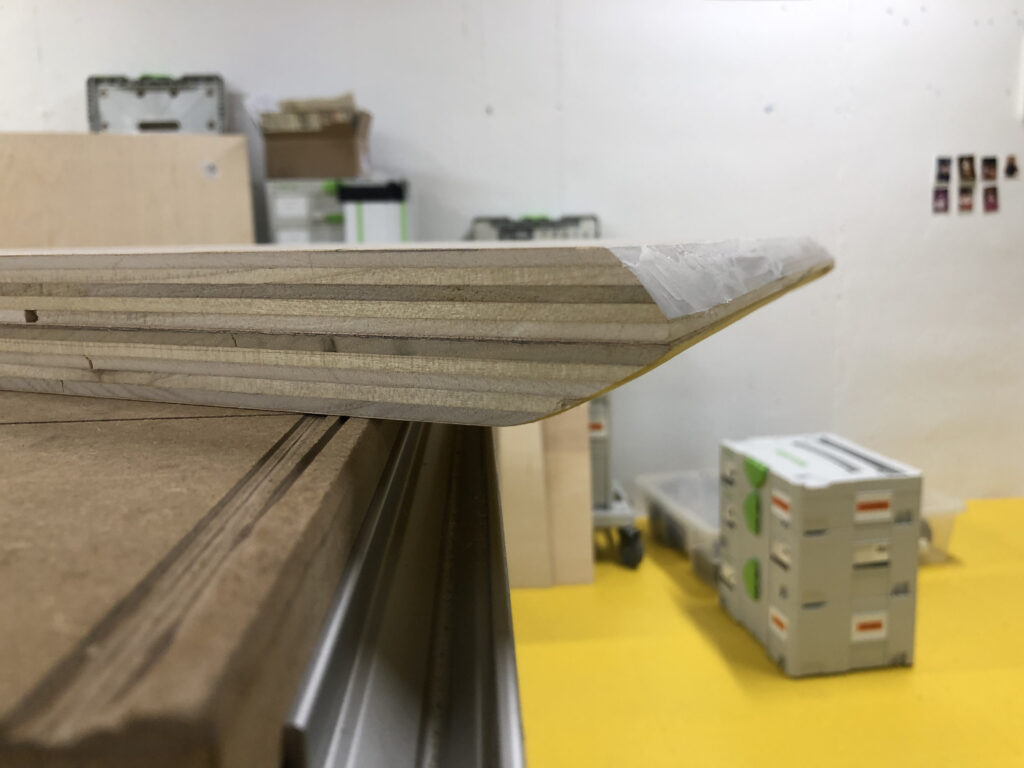
The deck extends past the edge of the hull and is fashioned from ¼” Birch plywood. The surface was filled and then prepped with Rustoleum gray primer followed by two coats of Rustoleum Camo Brown (all rattle can). Given its size, there was no way to airbrush the hull in the spray booth.

The boat will “float” in the river on rubber wheeled casters, allowing for ease of maneuverability and docking at the incline. The deck sits 10 scale feet above the waterline.
Code 100 nickel silver rail from Right-O-Way was spiked onto 12″x12″ scale timbers. The spikes were inserted at a very acute angle to prevent them from bottoming out on the plywood deck.

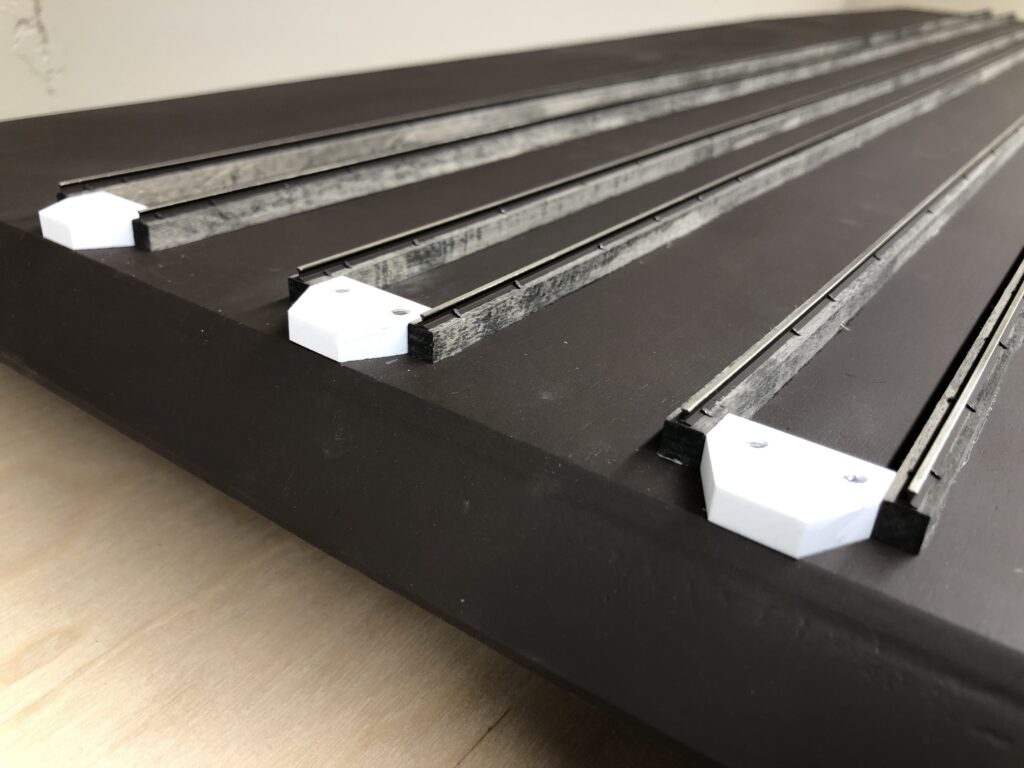
Before continuing with building of the hull and superstructure, docking has to be tested. Hence, the next phase of construction was the river bank and the incline. The benchwork was installed and the incline trestle was built from Mt. Albert Scale Lumber. The portion (apron) which makes contact with the boat was formed from styrene.
